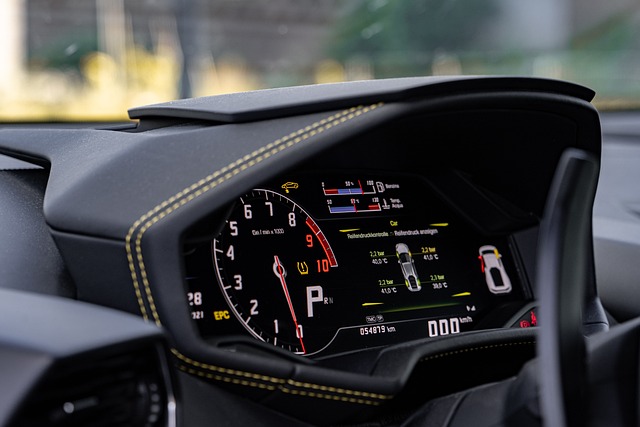It can be frustrating to see your check engine light come on right after replacing the car battery. Many drivers in New Zealand assume something has gone wrong during the battery swap, but that isn’t always the case. In this article, we’ll look at what the check engine light could indicate after a battery change, why it happens, how to diagnose the issue, and whether it’s something to be concerned about.
Why Your Check Engine Light Might Come on After a Battery Change
ECU Reset During Battery Replacement
When you replace your vehicle’s battery, the electrical power to the Engine Control Unit (ECU) is cut off. This causes the ECU to reset its memory. As a result, some sensors may not provide consistent readings right away, and temporary faults can appear. The check engine light (CEL) may illuminate as the ECU runs diagnostic tests and relearns settings such as idle speed, fuel-air mixture, and emissions parameters.
In many cases throughout New Zealand, this is completely normal. After driving for a few engine cycles (starting, running, stopping), the ECU typically reinitialises properly and the check engine light may turn off on its own. However, if it remains on after several trips, further diagnostics are needed.
Unplugged or Loose Sensors
In the process of replacing the battery, it’s easy for a connector or sensor wire to be tugged or knocked out of place. This is especially true in modern vehicles where engine bays are tightly packed. If a MAF sensor, oxygen sensor, or throttle position sensor is left disconnected or loosely attached, the ECU will detect a fault and turn on the check engine light.
Auto electricians in New Zealand often see vehicles where this small oversight has led to unnecessary worry. A simple inspection and reconnection might be all that’s needed to resolve the issue.
Corrosion on Battery Terminals or Electrical Contacts
Corroded battery terminals reduce the quality of the electrical connection. If the new battery was installed but the terminals weren’t cleaned properly, the voltage may drop intermittently. This can lead the ECU to perceive an unstable power supply, prompting a check engine light. In some cases, poor connectivity impacts the accuracy of sensor readings, compounding the problem.
A professional auto electrician can clean the terminals, test voltage stability, and ensure all electrical systems are functioning correctly.
Faulty Battery or Installation Errors
Not all replacement batteries are made equal. If the voltage of your new battery drops below the required threshold, especially during heavy engine load moments, the ECU can register a fault. Similarly, if the battery cables were not tightened properly or were installed in reverse for a brief moment, a fault code might be logged.
Auto electricians in New Zealand like Eurosparx often encounter issues caused by incompatible battery types or poor-quality units that don’t meet manufacturer specifications. It’s important to ensure you have a battery suited to your specific make and model.
Common Error Codes That May Appear After a Battery Change
O2 Sensor Heater Circuit Codes
After a battery reset, it’s not uncommon for codes related to the O2 sensor heater circuit to appear. These systems take time to recalibrate, and an initial error may show up during the relearning process. While it can trigger a check engine light, the issue might not be persistent and can clear itself after a few drive cycles.
EVAP System Leak Codes
The Evaporative Emission Control (EVAP) system is responsible for reducing fuel vapour emissions. Battery-related power interruption may cause temporary irregularities in the EVAP monitoring process. If the pressure readings don’t align with what the ECU expects immediately after reconnection, a fault code may appear. However, this doesn’t necessarily mean there’s an actual leak.
Idle Control System Codes
When power is restored to the ECU after a battery swap, the idle settings are often lost. You may notice a rough or high idle and sometimes an idle control fault code. As the ECU relearns optimal parameters, this can correct itself without intervention. Nonetheless, persistent rough idling should be checked out by a professional.
How to Diagnose and Fix the Check Engine Light
Use an OBD-II Scanner
An OBD-II code reader can be plugged into the diagnostic port of your vehicle to retrieve fault codes. These codes provide insight into which system or sensor is triggering the check engine light. While basic models show the code, more advanced scanners can provide descriptions and real-time data for deeper troubleshooting.
If you don’t have access to a scanner, most auto electricians and repair shops in New Zealand, including Eurosparx, can perform a diagnostic scan for you and interpret the results.
Perform a Visual Inspection
Open the bonnet and visually inspect the engine bay, especially in the area around the battery. Look for loose, disconnected, or damaged sensors or wiring harnesses. Check that the battery terminals are tight and clean. Make sure the battery is firmly seated and that no fuses have blown during installation.
If your vehicle starts and drives normally, and there are no unusual symptoms beyond the warning light, these basic checks might reveal the culprit.
Drive the Vehicle for a Few Cycles
In some situations, simply driving the vehicle normally for a few cycles (start-run-stop) is enough for the ECU to complete its self-checks and turn off the light. This is commonly seen in cars that have no real faults but simply needed time to recalibrate after a sudden power loss.
If the light remains on after several days, or if any performance issues are observed, a more thorough evaluation by a qualified technician is necessary.
When Should You Worry?
The Light is Flashing
If the check engine light is flashing, this typically indicates a severe issue such as a misfire that could damage the catalytic converter. It’s important not to ignore a flashing CEL under any circumstances. In such cases, stop driving and consult an auto electrician immediately.
You Notice Performance Issues
If the check engine light is accompanied by symptoms like hard starting, rough idling, stalling, poor fuel economy, or sluggish acceleration, it’s likely not just a temporary glitch. These issues could indicate real engine or sensor problems that need professional diagnosis and repair.
Light Persists for More Than a Few Days
If the check engine light doesn’t clear on its own after five or more drive cycles, the issue is unlikely to be a temporary ECU reset issue. Failed sensors, faulty connections, or even incorrect installation of the new battery may be to blame and need proper inspection.
The Importance of a Professional Diagnosis
Avoid Misdiagnosis and Costly Repairs
Attempting to diagnose check engine light errors on your own, especially with limited experience or tools, can lead to incorrect assumptions and unnecessary parts replacement. A professional auto electrician like Eurosparx in New Zealand uses specialised diagnostic equipment to accurately pinpoint the cause without guesswork.
Ensure Long-Term Vehicle Reliability
In some cases, small electrical anomalies flagged by the check engine light might indicate a larger underlying issue. Catching these problems early with proper diagnostics ensures they don’t snowball into expensive repairs or vehicle breakdowns.
This is particularly important for modern European cars, which rely heavily on integrated electronic control systems for everything from fuel injection to gear shifting. Prompt, professional evaluation is crucial to maintaining optimal performance.
Tips to Avoid Check Engine Light Issues During Future Battery Changes
Use a Memory Saver
One way to avoid ECU reset problems is by using a memory saver device during battery replacement. This plugs in through the OBD-II port or cigarette lighter and preserves the ECU’s settings by maintaining a small power supply while the battery is disconnected.
Many New Zealand auto electricians, including Eurosparx, use memory savers as part of their best practices to prevent check engine lights and other post-replacement glitches.
Choose a Battery that Meets Manufacturer Specs
Always ensure the replacement battery matches the specifications provided by the vehicle manufacturer in terms of voltage, cold cranking amps (CCA), and size. An undersized or underpowered battery can strain the ECU and other systems, possibly triggering fault codes.
Have the Battery Installed by a Professional
Although battery replacement seems simple, small mistakes can lead to electrical issues. Having a qualified auto electrician install the battery ensures that terminals are properly cleaned, settings are preserved, and no sensors or connections are dislodged. It’s a worthwhile investment in your vehicle’s electrical health and reliability.
Need Help With a Check Engine Light After a Battery Change?
Seeing your check engine light come on after changing the battery doesn’t always mean there’s a major problem. But if the light persists or the vehicle isn’t performing correctly, it’s essential to get a proper diagnosis. As expert auto electricians in New Zealand, we at Eurosparx can scan your vehicle, identify any faults, and fix the issue quickly and efficiently.
Contact our team today by calling 09 218 7789.


